CMS138v10 – Preventive Care and Screening: Tobacco Use: Screening and Cessation Intervention
| Preventive Care and Screening: Tobacco Use: Screening and Cessation Intervention | CMS138v10 | Percentage of patients aged 18 years and older who were screened for tobacco use one or more times within 12 months AND who received tobacco cessation intervention if identified as a tobacco user |
|---|---|---|
| – INITIAL POPULATION
All patients aged 18 years and older seen for at least two visits or at least one preventive visit during the measurement period. |
||
| – DENOMINATOR – 1
Patients aged 18 years and older seen for at least two medical visits or at least one preventive medical visit during the measurement period. |
– NUMERATOR – 1
Patients who were screened for tobacco use at least once within 12 months. |
|
| – DENOMINATOR – 2
Patients aged 18 years and older seen for at least two medical visits or at least one preventive medical visit during the measurement period and identified as a tobacco user. |
– NUMERATOR – 2
Patients who received tobacco cessation intervention. |
|
| – DENOMINATOR – 3
Patients aged 18 years and older seen for at least two medical visits or at least one preventive medical visit during the measurement period. |
– NUMERATOR – 3
Patients who were screened for tobacco use at least once within 12 months and who received tobacco cessation intervention if identified as a tobacco user. |
|
| – DENOMINATOR EXCEPTIONS 1
Documentation of medical reason(s) for not screening for tobacco use (eg, limited life expectancy, other medical reason). – DENOMINATOR EXCEPTIONS 2 Documentation of medical reason(s) for not providing tobacco cessation intervention (eg, limited life expectancy, other medical reason). – DENOMINATOR EXCEPTIONS 3 Documentation of medical reason(s) for not screening for tobacco use OR for not providing tobacco cessation intervention for patients identified as tobacco users (eg, limited life expectancy, other medical reason). |
||
| – APPLICATION WORKFLOW
For Denominator 1: All patients aged 18 years and older seen for at least two visits or at least one preventive visit during the measurement period are included in the denominator. To record the encounters, navigate to Patient > Provider Notes > Create eSuperbill. Under the ‘Procedure- CPTs’ heading, enter the encounter code.
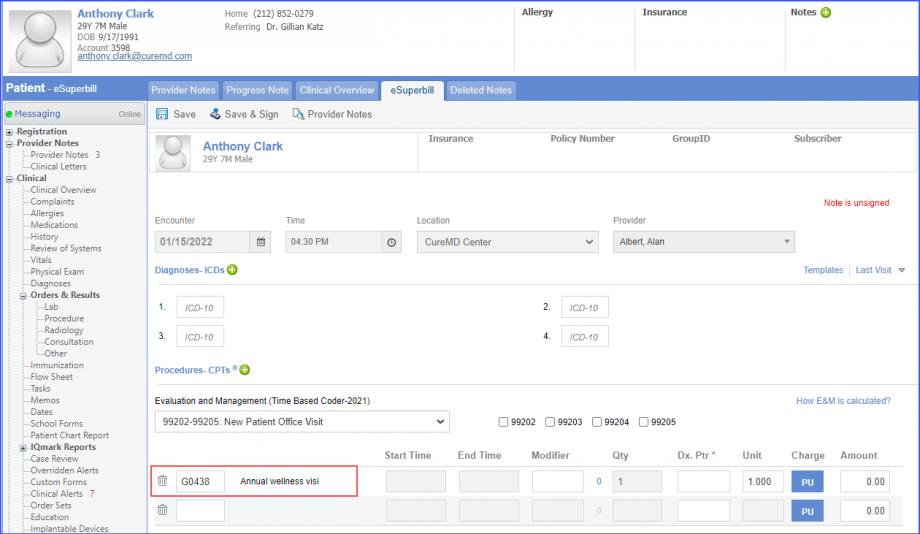 For Denominator 2: All patients aged 18 years and older seen for at least two medical visits or at least one preventive medical visit during the measurement period and identified as a tobacco user. To record the encounters, navigate to Patient > Provider Notes > Create eSuperbill. To document identification as a tobacco user, use the workflow Patient > Clinical > History > Social to land on ‘Tobacco’ tab and select the ‘Smoking Status’ of the patient from the drop-down. Select any of the following options from the ‘Smoking Status’ dropdown to identify patient as Tobacco User:
Once done click ‘Save’. 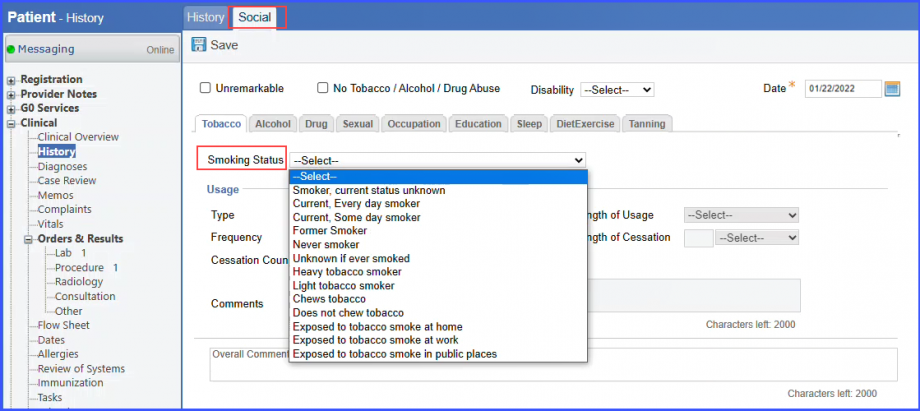 For Denominator 3: It has the same criteria as Denominator 1. For Numerator 1: Patients who were screened for tobacco use at least once within 12 months and identified as smoker or non-smoker qualify for the numerator. To document this criteria, use the workflow Patient > Clinical > History > Social to land on ‘Tobacco’ tab and set the ‘Smoking Status’ of the patient from the drop-down. Once done, click on the ’Save’ button. User can select any of the following options from the ‘Smoking Status’ dropdown to identify a patient as Tobacco Non-User:
User can select any of the following options from the ‘Smoking Status’ dropdown to identify a patient as Tobacco User:
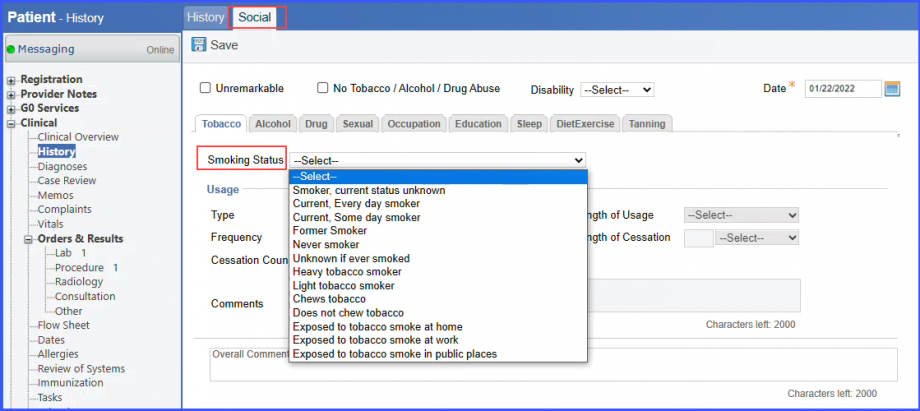 For Numerator 2: Patients satisfying any of the following criteria are included in numerator 2.
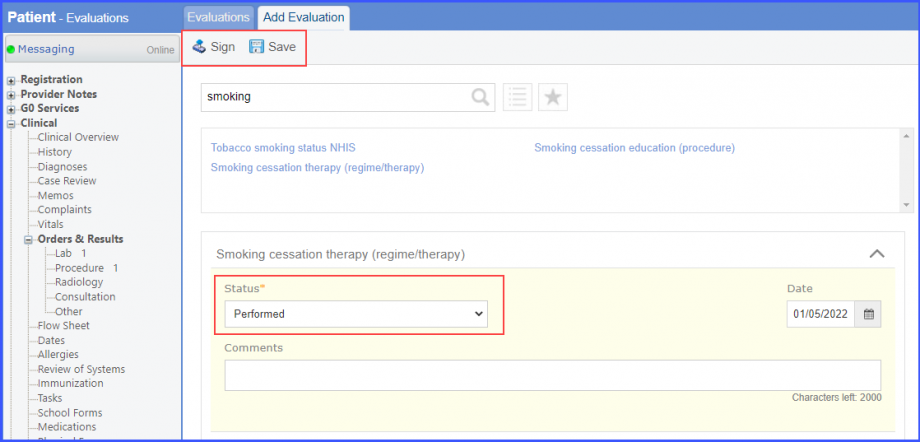 The intervention codes: 225323000, 315232003, 384742004, 395700008 can also be recorded using the workflow Patient > Clinical > History > Social. Identify the patient as Tobacco User from the ‘Smoking Status’ dropdown. Then select an intervention from the ‘Cessation Counselling’ dropdown. Once done, click on the ’Save’ button.
 Add the prescription, then click ‘Save’. 
 Record the medication dosage then click ‘Save’. 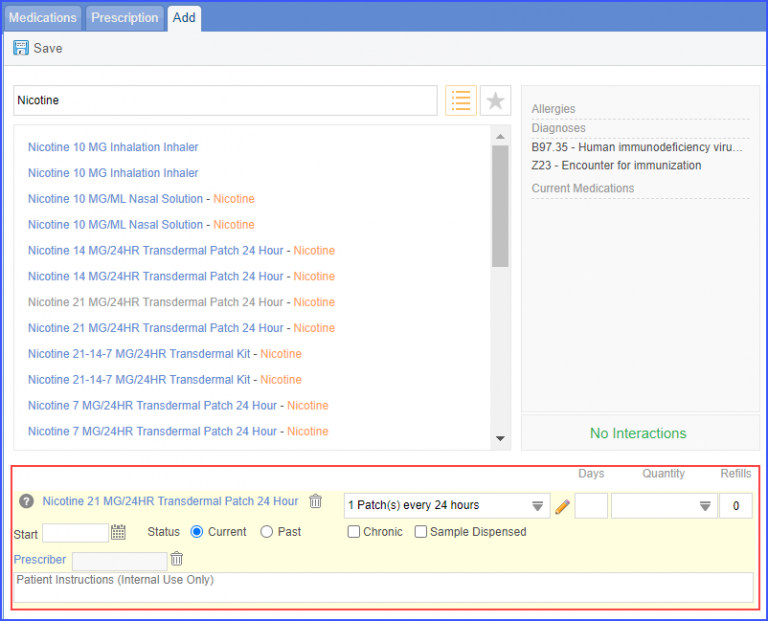 For Numerator 3: Numerator 3 includes any one of the following:
For Denominator Exception 1: Include all patients with a documentation of medical reason(s) for not screening for tobacco use.
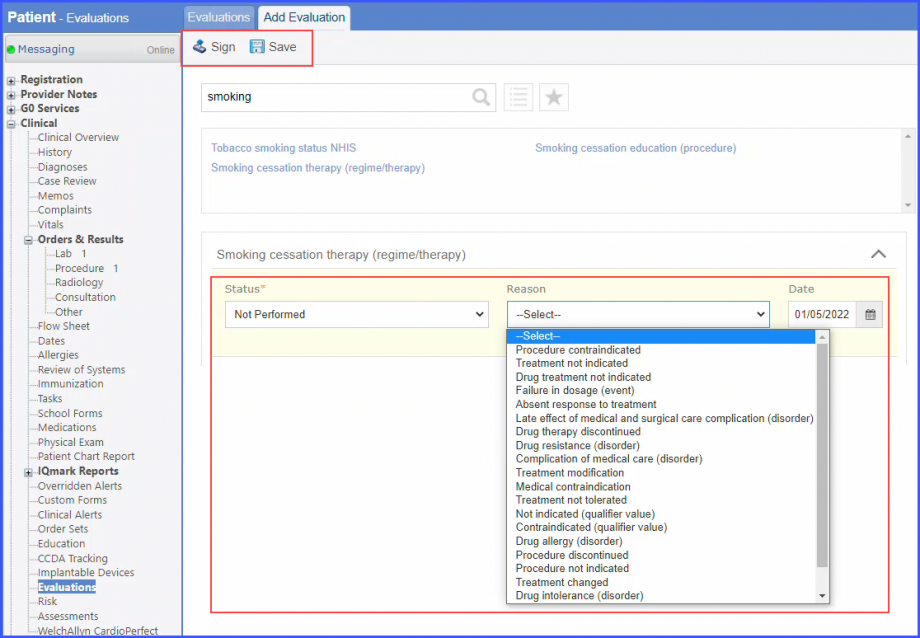
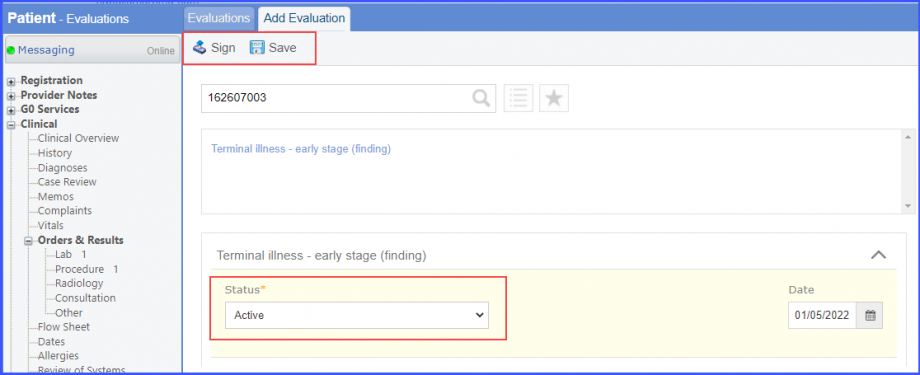 For Denominator Exception 2: Include all patients with a documentation of medical reason(s) for not providing tobacco cessation intervention (e.g., limited life expectancy, other medical reason). Satisfy any of the following condition to include in denominator exception 2 criteria.
 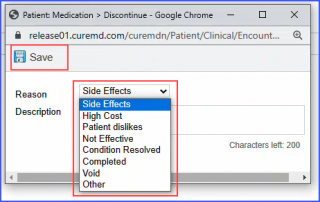
For Denominator Exception 3: Include all patients with a documentation of medical reason(s) for not screening for tobacco use or for not providing tobacco cessation intervention for patients identified as tobacco users (e.g., limited life expectancy, other medical reason)
|
||
